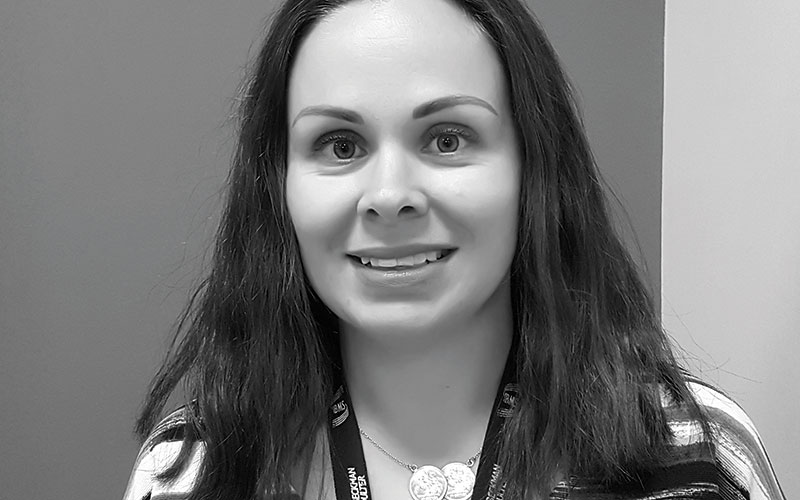Three professionals discuss how technology can be used to support learning and CPD.

Jade Roberts

Glan Clwyd Hospital, North Wales
With the different technologies available these days, supporting learning and CPD has become easier and more exciting. I am a huge advocate for the IBMS ePortfolio for managing CPD, as it is quick, easy and concise. This means logging CPD for busy scientists is not a chore.
The introduction of slide scanning technology has further helped with learning and CPD in our laboratory, as it enables stained slides to be scanned, stored and shared whether they are from interesting cases, validation studies, or issues arising from processing or staining.
Many of our trainee biomedical scientists, and those undertaking a specialist diploma, scan slides as evidence for their portfolios and we also use scanned slides for lunchtime CPD presentations.
As a training laboratory we aim to promote learning for new and experienced staff. Upon reviewing our training documents, we now include links to manufacturer’s handbooks, recommended reading and websites background knowledge and specific information to encourage self-learning and development.
I have personally started using the eCPD app on my smartphone - where I can access a wide range of lectures, presentations, papers and courses of differing lengths. Whether you have 10 minutes or three hours to spare, there is something for you – I love the range and variety of learning available and it has the added benefit of recording the learning undertaking in a “portfolio”.
Ashley Ballard


Senior Biomedical Scientist
Cellular Pathology
Royal Bournemouth Hospital
In my opinion, technology can help support learning in two main ways. Firstly, technology opens-up additional learning opportunities. An example of this is e-learning; with the recent growth of high-speed internet access there has also been an increase in the availability of online courses – both short courses and longer more traditional courses, such as MSc programs. With greater ease of access to these courses and the need to attend physical classes eliminated technology has boosted lifetime learning opportunities. Secondly, technology allows de-construction of the learning process. Webinars and e-learning have made it easier for people to dip in and out of learning, fitting it around increasingly busy working lives.
There are also ways that technology can augment traditional learning, such as virtual blackboards and online discussion groups. And, in histology, the use of digital pathology is allowing easier sharing and discussion of instructive or unusual cases either live in online training sessions or via the use of archived digital training sets. While these things can be achieved by traditional means, technology widens the potential audience and allows greater interaction.
In summary, while technology provides additional opportunities and environments that can extend the possibilities offered by traditional learning techniques, it should not be seen as a replacement, nor does it necessarily guarantee effective learning.
David Muskett

Salford Royal Hospital
Technology has a great role to support learning and CPD, but there are limits. If learning and CPD is split into three categories (theoretical, practical and interpretive) then technology can be really helpful for theoretical and interpretive learning. Theoretical learning can be applied with online virtual learning environments, such as Moodle, Eliademy and Google Classroom. At a simpler level, macro-enabled excel sheets can be used for self-marking quizzes. Interpretive learning can be done via e-learning apps, such as Articulate or Iseazy. Tests can be used to ask students to identify areas on images such as clusters of cells or instrument functions.
The online IBMS ePortfolio is a real asset too, as it saves me from keeping and sorting out bits of paper (not one of my greatest strengths) and allows my CPD records to be kept safely and together.
Technology has the ability to bring together professionals who would find it difficult to meet face-to-face. But there is a note of caution – not all practitioners are naturally suited to technology-based learning and CPD packages, as we have different learning preferences and learning styles. Some will find these systems easy, but others find them a battle. Individuals need to reflect on what works best for them. They must be careful to address their personal learning needs, which may be the development of knowledge, or could be the need for practical skills.
